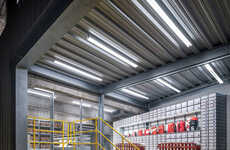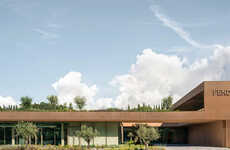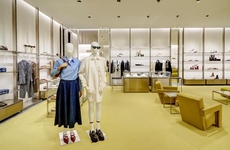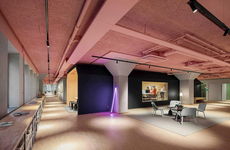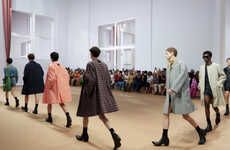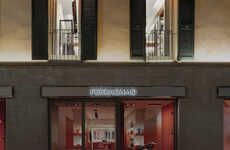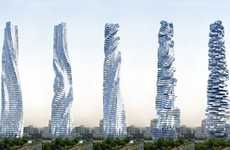
The New Gucci Milan Headquarters Takes Advantage of Lost Spaces
Justin Lam — February 28, 2018 — Art & Design
References: piuarch.it & dezeen
The new Gucci Milan Headquarters can be found in a former aircraft manufacturing facility that has been expertly redesigned to house the fashion giant. The new space was designed by Italian architects Piurach, which focused on enhancing the stylish features of space while still maintaining the 1920s architecture. Most of the major changes occurred in the interior of the buildings, as Piurach repurposed the expansive warehouses into showrooms and spaces for hosting fashion shows.
The rows of former warehouses blend seamlessly into the interiors of building, giving the new Gucci Milan Headquarters a deep sense of connection that all seems to converge on a six-storey tower. The striking tower is covered with a grid of steel sunscreens and is the most modern intervention on the site. That being said, the tower still blends in with the surrounding space, as the black steel construction mirrors the metal roof of the warehouses.
Image Credit: Piurach
The rows of former warehouses blend seamlessly into the interiors of building, giving the new Gucci Milan Headquarters a deep sense of connection that all seems to converge on a six-storey tower. The striking tower is covered with a grid of steel sunscreens and is the most modern intervention on the site. That being said, the tower still blends in with the surrounding space, as the black steel construction mirrors the metal roof of the warehouses.
Image Credit: Piurach
Trend Themes
1. Repurposed Warehouses - Repurposing warehouses into unique spaces offers opportunities for businesses to create innovative and visually appealing headquarters.
2. Architectural Integration - Blending modern interventions with existing architecture allows for the creation of stylish and functional spaces.
3. Industrial Aesthetics - Using industrial elements like steel sunscreens and metal roofs adds a unique and trendy aesthetic to corporate headquarters.
Industry Implications
1. Fashion - Fashion brands can benefit from repurposing warehouses by creating immersive and experiential spaces for showcasing their products.
2. Architecture - Architects specializing in repurposing old buildings have opportunities to showcase their creativity and design expertise.
3. Construction - Construction companies can focus on integrating modern interventions with existing structures to cater to the growing demand for repurposed spaces.
2.4
Score
Popularity
Activity
Freshness

